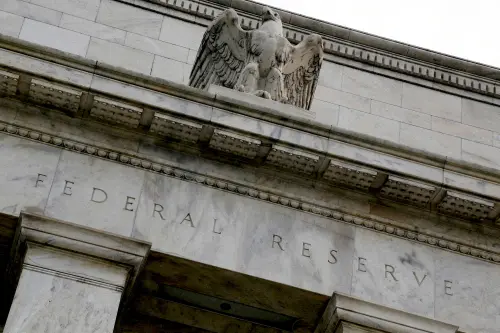The Federal Reserve appears poised to end a historic streak of losses, potentially enabling it to return cash to the Treasury in the future, according to analysts at Morgan Stanley.
The key issue is the balance between how the Fed generates income to fund its operations and the cash it disburses to control short-term interest rates. Aggressive rate hikes over the past three years pushed the Fed's financial position into the red. However, with short-term rates now decreasing, Morgan Stanley believes the Fed is nearing a point of profitability again.
The report identifies a "breakeven rate," where Fed income matches its expenses. This rate is calculated by dividing the average interest payments from its bond holdings by its interest liabilities. As of March 12, the Fed's weighted average coupon was 2.66%, with reserves and reverse repos comprising approximately 55% of its balance sheet, resulting in an estimated breakeven rate of around 4.8%. Economists at Morgan Stanley state that the Fed is on the verge of ceasing its operating losses, attributing this change to a smaller balance sheet and lower policy rates.
The size of the Fed's bond holdings, along with the potential for additional rate cuts, suggests the central bank may start earning a profit again. If the Fed cuts rates further as anticipated, shifts in interest flows from its securities are likely to accelerate its return to profitability.
This analysis follows the Fed's recent disclosure of its financial outlook for 2024, which showed a reduced loss compared to the record deficit reported for 2023. The U.S. central bank estimated its comprehensive net loss for 2024 at $77.5 billion, down from $114.6 billion in 2023. The last profitable year for the Fed was 2022.
Fed officials have emphasized that these losses do not impede the institution's ability to execute monetary policy or its operations. Traditionally, the Fed has been a significant profit generator, as income from its bonds typically exceeded payments made to banks and money market funds for short-term rate management.
The situation shifted in 2022 when the Fed significantly raised its interest rate targets to combat inflation, leading to surging interest expenses that outstripped earnings from bonds and hindered distributions to the Treasury.
Currently, the Fed categorizes its losses as a deferred asset, meaning it must utilize future profits to offset these losses before it can resume profit distributions. As of last Wednesday, the deferred asset stood at $224.4 billion.
While analysts predict it may take years to eliminate this deferred asset, Morgan Stanley's assessment suggests that the central bank is finally moving closer to achieving this goal.
